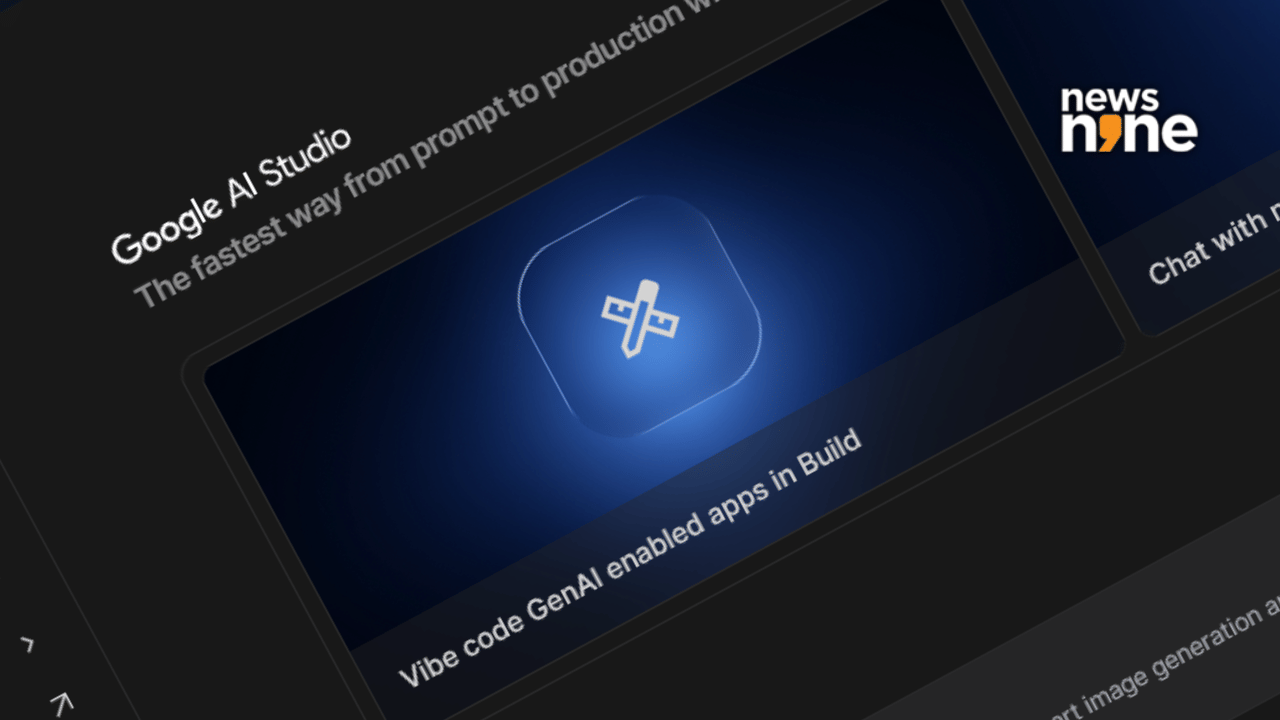New Delhi: Google is turning its AI Studio platform into a full-fledged app-building playground with the launch of vibe coding, a new experience that lets anyone create AI-powered applications using just natural language prompts. The update not only targets developers but also students, entrepreneurs and non-coders who want to move from idea to prototype in minutes without setting up infrastructure. This marks a major step in Google’s strategy to make AI app creation as mainstream as building a website.
Google has said it wants one million AI apps built on its platform by the end of the year, and vibe coding is clearly the engine for that goal. Patrick Löber from Google DeepMind described the upgrade as a way to “supercharge your apps with AI” using a prompt-to-app workflow. Logan Kilpatrick, who leads product for Gemini and AI Studio, said this update is only the beginning, with more features coming within two months.
Today, we’re introducing the new vibe coding experience in @GoogleAIStudio!🔥
We want to make it as easy as possible for you to build AI apps 🙂 Short demo of what’s new: pic.twitter.com/UUooPtHMqO
— Patrick Loeber (@patloeber) October 21, 2025
What is vibe coding in AI Studio
Vibe coding is Google’s term for natural language-based app development. Instead of writing code, users enter instructions like “build a garden planning assistant” or “create an interactive chatbot with image generation” and the platform auto-generates a working prototype. It uses Gemini 2.5 Pro and Flash models as default options, with expected support for Gemini 3 on the way.
The new Build tab in AI Studio serves as the entry point. It includes a model picker, a modular feature selector and an application gallery that may evolve into a public app store. Features like image generation, media editing, deep reasoning and performance acceleration can be added with single clicks. These are treated as components that Gemini recognises and binds together during app assembly.
Introducing the new AI first vibe coding experience in @GoogleAIStudio! Built to take you from prompt to production with Gemini, and optimized for AI app creation. Start building AI apps for free : )
More updates and features to come! pic.twitter.com/HpI7Dsl8Bj
— Logan Kilpatrick (@OfficialLoganK) October 21, 2025
Features designed for both coders and non-coders
The interface is split between a chat-driven coding assistant and a traditional code editor. Even if someone has no familiarity with programming, they can rely on the AI to generate or edit entire sections. Developers, meanwhile, can dive into the code and fine-tune files such as React front ends and API calls.
Some standout features include:
- Secret variables: store API keys securely for production apps.
- I’m Feeling Lucky button: generates random app ideas to spark creativity.
- Context-aware suggestions: Gemini recommends features based on your app’s purpose.
- One-click deployment: users can send apps live via Google Cloud Run and receive an instant URL.
Kilpatrick demonstrated this in a video, showing how a fully functional chatbot was deployed in under five minutes using only prompts and feature selections.
Why this matters for AI development
This move is part of a wider trend among major AI companies racing to lower the barrier to app creation. Rivals like OpenAI and Anthropic have their own agent and coding tools but often require more technical steps. Google is aiming to integrate everything inside a single platform that includes coding, API management, hosting and distribution.
Thomas Kurian, head of Google Cloud, recently said other companies “are handing you the pieces, not the platform”. Google appears to be positioning AI Studio as that integrated platform.
The timing is also significant. The industry is expecting the release of Gemini 3, which is believed to have much stronger reasoning and visual capabilities. Two unreleased models, code-named lithiumflow and orionmist, were spotted on public leaderboards and are speculated to be early versions of Gemini 3 Pro and Flash. If those models get added to AI Studio soon, vibe coding could become even more powerful.
The future of AI-powered app creation
This is the beginning of Google’s push into agentic AI. The new vibe coding workflow introduces a visual, conversational and iterative app-building journey. Users can start with simple instructions, deploy instantly and later expand features through guided suggestions from Gemini.
With free access to core tools and paid upgrades for advanced deployment, Google is clearly trying to attract both hobby builders and enterprise teams.
